Related Research Articles

The Seagram Company Ltd. was a Canadian multinational conglomerate formerly headquartered in Montreal, Quebec. Originally a distiller of Canadian whisky based in Waterloo, Ontario, it was in the 1990s the largest owner of alcoholic beverage lines in the world.

The Glenlivet distillery is a distillery near Ballindalloch in Moray, Scotland, that produces single malt Scotch whisky. It is the oldest legal distillery in the Highlands of Scotland. It was founded in 1824 and has operated almost continuously since.

The Corps des mines is the foremost technical Grand Corps of the French State. It is composed of the state industrial engineers. The Corps is attached to the French Ministry of Economy and Finance. Its purpose is to entice French students in mathematics and physics to serve the government and train them for executive careers in France.

Allied Domecq PLC was an international company, headquartered in Bristol, United Kingdom, that operated spirits, wine, and quick service restaurant businesses. It was once a FTSE 100 Index constituent but has been acquired by Pernod Ricard.
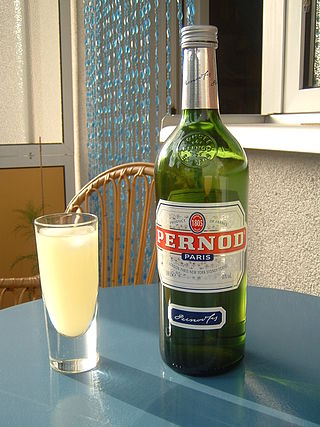
Pernod is an absinthe produced by Pernod Ricard released in 2005 based on the original Pernod Fils recipe.

Pernod Ricard is a French company best known for its anise-flavoured pastis apéritifs Pernod Anise and Ricard Pastis. The world's second-largest wine and spirits seller, it also produces several other types of pastis.
Lamb's Navy Rum is a sugar-cane based Caribbean rum popular in the UK and Canada.

Paul Louis Marius Ricard was a French industrialist and creator of an eponymous pastis brand which merged in 1975 with its competitor Pernod to create Pernod Ricard. Ricard was also an environmentalist and the developer of two Mediterranean islands, as well as the builder of the Circuit Paul Ricard in Le Castellet.

Byrrh is an aromatised wine apéritif made of red wine, mistelle, and quinine. Created in 1866 and a trademark since 1873, it was popular as a French apéritif. With its marketing and reputation as a "hygienic drink", Byrrh sold well in the early 20th century. It was even exported, despite the similarity of its name to "beer", complicating sales in English- and German-language speaking regions.
Pernod Ricard Winemakers is the wholly owned wine subsidiary of French wine and spirits producer Pernod Ricard, which is one of the largest alcoholic beverage companies in the world. It arose from the Australian and New Zealand companies formerly known as Premium Wine Brands and Pernod Ricard Pacific, and was then extended to become Pernod Ricard's umbrella organisation for its wine operations in other countries. Amongst its large portfolio, its major wineries are Jacob's Creek from Australia, Campo Viejo from Spain, Kenwood Vineyards from the United States, and Brancott Estate from New Zealand.
Thierry Jacquillat was a French businessman who dedicated most of his career to the global wine and spirits group Pernod Ricard.
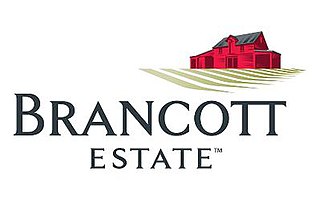
Brancott Estate is the brand adopted since 2010 by Pernod Ricard for New Zealand's largest wine producer, formerly Montana Wines, which now operates as the New Zealand division of Pernod Ricard Winemakers. The name comes from its Brancott winery in Blenheim, and was chosen to reduce confusion in the United States market with wines from the state of Montana.

Renat Brännvin is a Swedish brännvin (vodka) with 37.5% alcohol content produced by Vin & Sprit and made from wheat grown in Västergötland in Sweden.

Corby Spirit and Wine Limited is a Canadian alcohol manufacturing and distribution company. It was founded in 1859 in Corbyville, Ontario. As of 2008, the company is 46% owned by Pernod Ricard. The company distills several Canadian specialities, as well as marketing Pernod Ricard's products in Canada. Corby is listed on the Toronto Stock Exchange under the trading symbols CSW.A and CSW.B. Corby is known for funding free travel on the TTC on New Years Eve in Toronto.
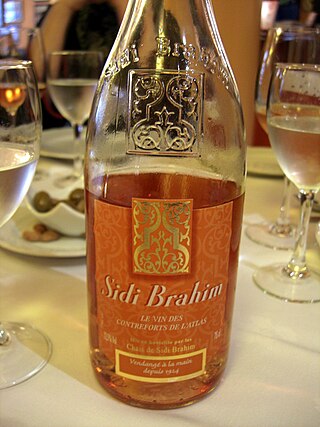
Sidi Brahim is a range of branded wines produced in the Atlas mountains, first in Algeria, then in Morocco and now in Tunisia. The wines are blended and bottled or filled into bag-in-boxes in France, and are primarily sold there. It was the second-best selling foreign wine in France, behind Boulaouane, as of 2005. The production volume is around three million bottles annually. The wine has been named after the Battle of Sidi-Brahim (1845).
Castel Group is a French beverage company. It was established in 1949 by Pierre Castel, who continues to run the company as a family-owned concern.
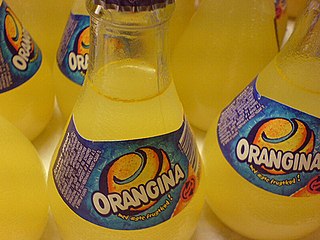
Jean-Claude Beton was an Algerian-born French businessman, agricultural engineer and entrepreneur. Beton was the founder of the French soft drink maker, Orangina. He is credited with transforming Orangina from a little known citrus soda first manufactured by his father, Léon Beton, into a major global brand. Beton launched Orangina's iconic, signature 8-ounce bottle in 1951, which became a symbol of the brand. The bottle is shaped like an orange, with a glass texture designed to mimic the fruit. In 2009, Beton called Orangina the "champagne of soft drinks," saying that "It doesn't contain added colorants. It was and still is slightly sparkling. It had a little bulby bottle."

Ricard is a pastis, an anise and licorice-flavored apéritif, created by Marseille native Paul Ricard in 1932, who marketed it as the "true pastis from Marseille".

Kenwood Vineyards is a winery in Kenwood, California, located on Highway 12 in the Sonoma Valley wine country. It is currently owned by Pernod Ricard Winemakers.
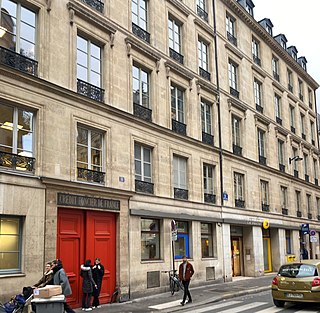
The Compagnie Algérienne, from 1942 to 1948 Compagnie Algérienne de Crédit et de Banque, was a significant French bank with operations in Algeria, Morocco, Tunisia and Lebanon as well as mainland France. It was formed in 1877 in a restructuring of its predecessor entity, the Société Générale Algérienne, itself founded in 1865-68. The Compagnie Algérienne eventually merged in 1960 with the Banque de l'Union Parisienne. Following a series of subsequent restructurings, its main successor entities as of 2022 are the Crédit du Nord in France, the Crédit populaire d'Algérie in Algeria, the Banque de Tunisie in Tunisia, Attijariwafa Bank in Morocco, and the Banque Libano-Française in Lebanon.
References
- 1 2 Jacquillat Thierry, 2005, "Fais vite, ne traine pas en route", Edition Albin Michel
- ↑ historique des docks Lyonnais [ dead link ]
- ↑ 99 years lease, Town of Marseille, term 1986
- ↑ For traffic and transportation between France and Algeria at that time refer to "L'information géographique", René Caralp, 1952, p.195 à 201
- ↑ Jacquillat Thierry, 8 December 2006, Minutes of the conference "Une mondialisation au galop", Ecole de Paris du Management, p.4 and 8
- ↑ Maître Deydier's Minutes, dated 22/24/29 November and 6 December 1965
- ↑ Maître Deydier's Minutes, dated 3 June 1965
- ↑ Maître Deydier's Minutes, dated 26/27 January 1965, with agreement from French Ministry of Finance dated 26 December 1967 n° 16/931
- ↑ Maître Deydier's Minutes, dated 5 April 1971, with agreement from French Ministry of Finance dated 29 March 1971 n° 16/1585